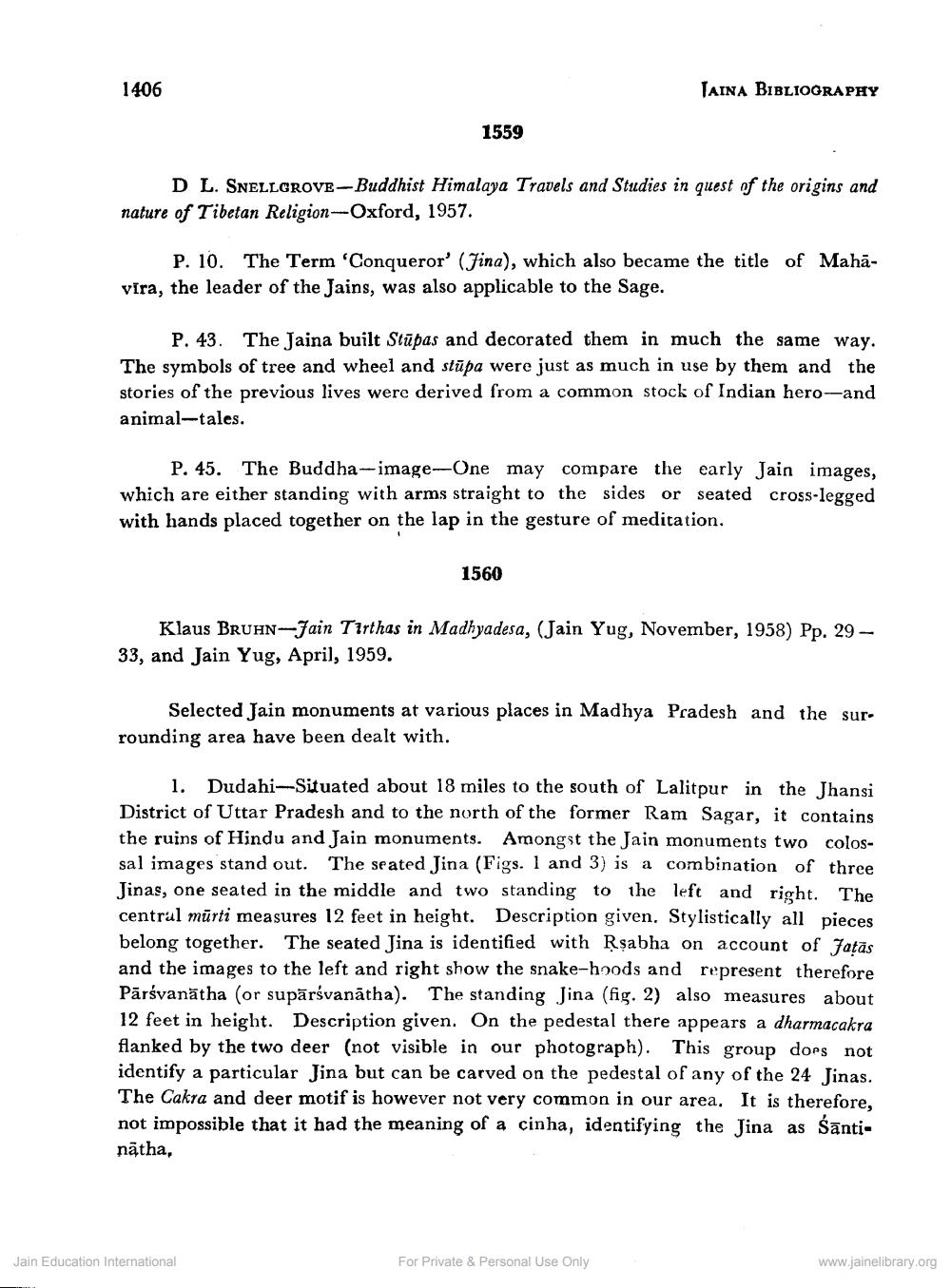________________
1406
1559
D L. SNELLGROVE-Buddhist Himalaya Travels and Studies in quest of the origins and nature of Tibetan Religion-Oxford, 1957.
P. 10. The Term 'Conqueror' (Jina), which also became the title of Mahavira, the leader of the Jains, was also applicable to the Sage.
JAINA BIBLIOGRAPHY
P. 43. The Jaina built Stapas and decorated them in much the same way. The symbols of tree and wheel and stupa were just as much in use by them and the stories of the previous lives were derived from a common stock of Indian hero-and animal-tales.
P. 45. The Buddha-image-One may compare the early Jain images, which are either standing with arms straight to the sides or seated cross-legged with hands placed together on the lap in the gesture of meditation.
1560
Klaus BRUHN-Jain Tirthas in Madhyadesa, (Jain Yug, November, 1958) Pp. 2933, and Jain Yug, April, 1959.
Jain Education International
Selected Jain monuments at various places in Madhya Pradesh and the surrounding area have been dealt with.
1. Dudahi-Situated about 18 miles to the south of Lalitpur in the Jhansi District of Uttar Pradesh and to the north of the former Ram Sagar, it contains the ruins of Hindu and Jain monuments. Amongst the Jain monuments two colossal images stand out. The seated Jina (Figs. 1 and 3) is a combination of three Jinas, one seated in the middle and two standing to the left and right. The central mürti measures 12 feet in height. Description given. Stylistically all pieces belong together. The seated Jina is identified with Rsabha on account of Jatas and the images to the left and right show the snake-hoods and represent therefore Pārsvanatha (or supärśvanatha). The standing Jina (fig. 2) also measures about 12 feet in height. Description given. On the pedestal there appears a dharmacakra flanked by the two deer (not visible in our photograph). This group does not identify a particular Jina but can be carved on the pedestal of any of the 24 Jinas. The Cakra and deer motif is however not very common in our area. It is therefore, not impossible that it had the meaning of a cinha, identifying the Jina as Santinatha,
For Private & Personal Use Only
www.jainelibrary.org




